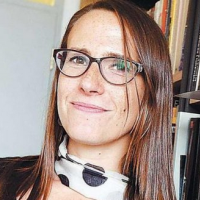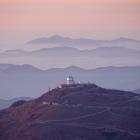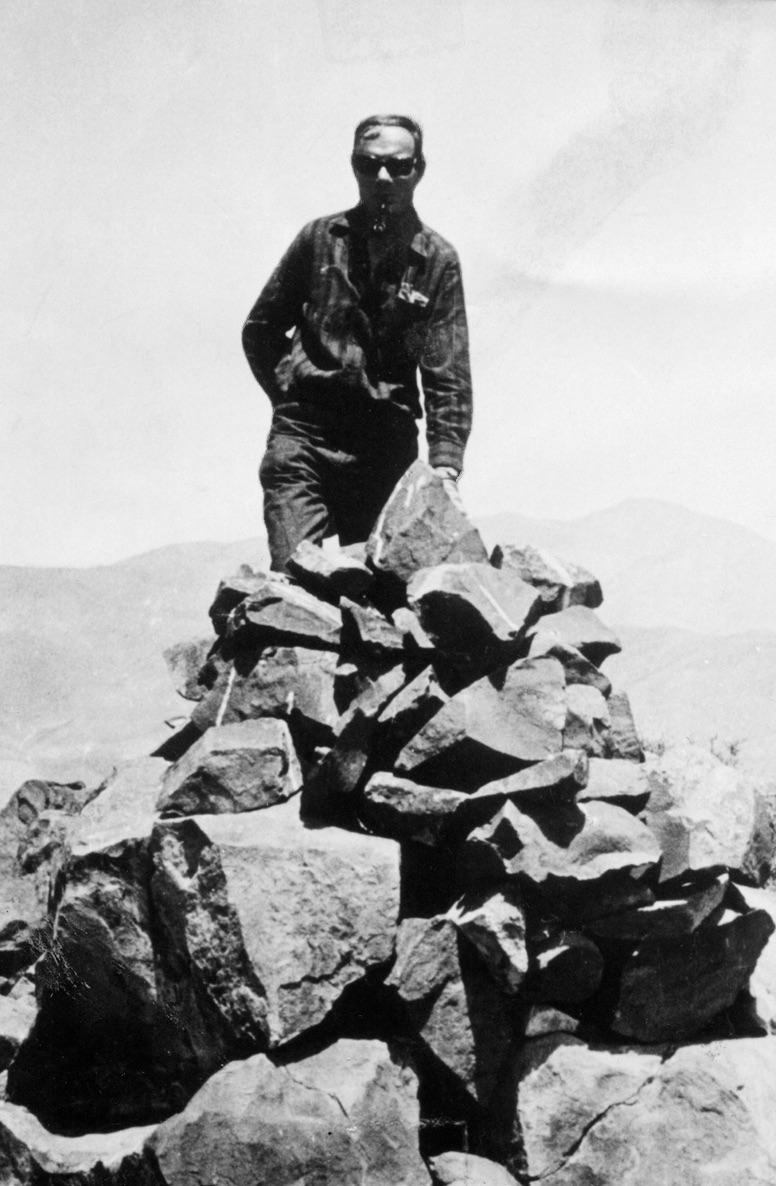
Jürgen Stock during the search for suitable sites in Chile, c. 1962. Courtesy of ESO.
Jürgen Stock during the search for suitable sites in Chile, c. 1962. Courtesy of ESO.
Unknown photographer, n.d.
Accessed via the European Southern Observatory. Click here to view source.
 This work is licensed under a Creative Commons Attribution 4.0 International License.
This work is licensed under a Creative Commons Attribution 4.0 International License.
In 1959, German astronomer Jürgen Stock arrived in Chile to do site testing for astronomical observation. In the early 1960s, astronomy would take off in different parts of the world; the space race, technological development, and insufficient knowledge about southern skies led different countries of the Northern Hemisphere to plan for southern observatories. Working for the Yerkes Observatory, operated by the University of Chicago, and afterward for AURA, the Association of Universities for Research of Astronomy (both US institutions), Stock’s expedition would be key to deciding whether Chile was the right place to build a massive observatory in the Southern Hemisphere. Not long after arriving in the Latin American country, he realized there were exceptional-looking sites about 450 kilometers north of Santiago, in the semi-arid region of Coquimbo—the southern edge of the Atacama Desert.
This expedition marks the beginning of transnational astronomy in Chile, nowadays a global astronomical center. In the early 1960s, Stock’s mission coincided with European and Soviet plans to establish their own observatories in the country. Nevertheless, Stock was the only one who developed a detailed strategy to assess several mountains in the Coquimbo region and determine which place had the best conditions for astronomical observation. For this, he had sophisticated equipment: every time he climbed a mountain, he had to bring an interferometer with him to measure the wavelength of light very accurately. Also, he had to carry a Danjon telescope to make sure visibility was of the quality they were aiming for. According to Stock’s reports, interferometers caused quite some excitement among local people. It was new technology, complicated apparatus they were not familiar with.
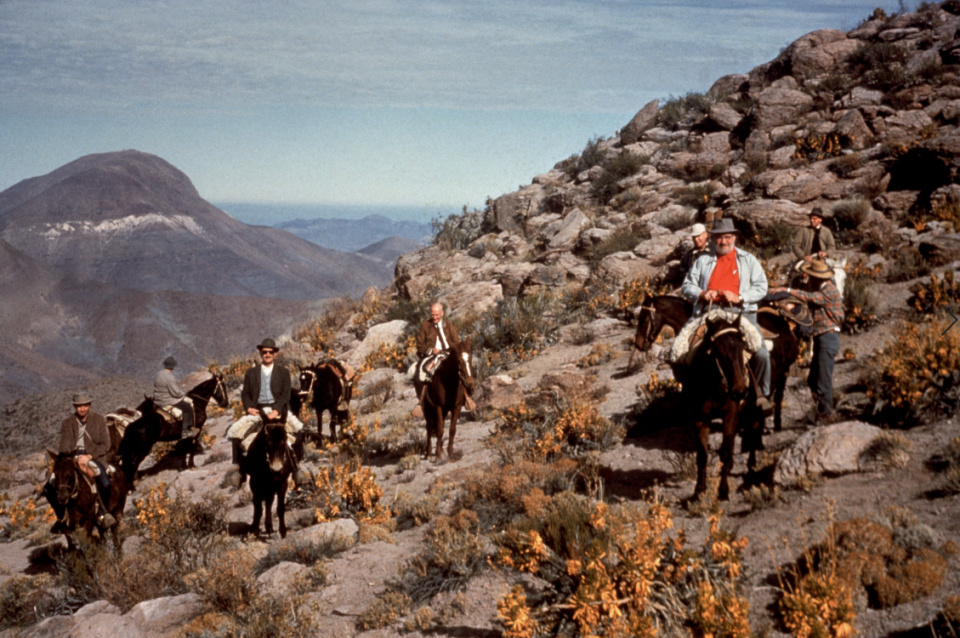
Americans and Europeans meeting on Cerro Morado, Coquimbo Region, Chile 1963. Courtesy of ESO/F.K.Edmondson.
Americans and Europeans meeting on Cerro Morado, Coquimbo Region, Chile 1963. Courtesy of ESO/F.K.Edmondson.
Photograph by F. K. Edmondson, June 1963.
Accessed via the European Southern Observatory. Click here to view source.
 This work is licensed under a Creative Commons Attribution 4.0 International License.
This work is licensed under a Creative Commons Attribution 4.0 International License.
Stock soon learned that he needed much more than just these high-tech instruments to go uphill in the Andes. He had to engage with local actors—peasants who knew the mountains—to figure out which was the best way to climb up- and then downhill, how to spot a coming storm, and where to find water; he needed local knowledge of the area. Moreover, he soon realized nonhuman actors were also playing an essential part in this expedition. Having mules to carry the sophisticated equipment, as well as food and water supplies, was of great importance, as it had been for centuries in many regions of the Andes. The availability of mules was not as simple as one might think: muleteers and peasants depended on them for their daily work in farming and cattle raising, and were not always willing to rent them out. The solution was to buy some mules, who oddly ended up being listed as part of the staff in the University of Chicago records, the institution that managed the first stage of the project. Beyond this curious fact, Stock’s mules allow us to question our understanding of scientific and technological production, usually associated with newness. In this case, as David Edgerton has argued, mules were indeed a crucial technology.
Humans and nonhumans, as well as sophisticated technology and local culture, were present in Stock’s expedition. As the project developed, his team started doing site testing on a couple of mountains at the same time, and they needed to communicate. Stock asked to buy a radio with detailed technological specifications. But while waiting for the radios to arrive, he used smoke signals and flashing-light Morse code to make sure his team was safe at the summit of a nearby mountain. Improvisation was part of the technological expedition: a mule was responsible for the Danjon telescope while the astronomer lit a fire to make some smoke.
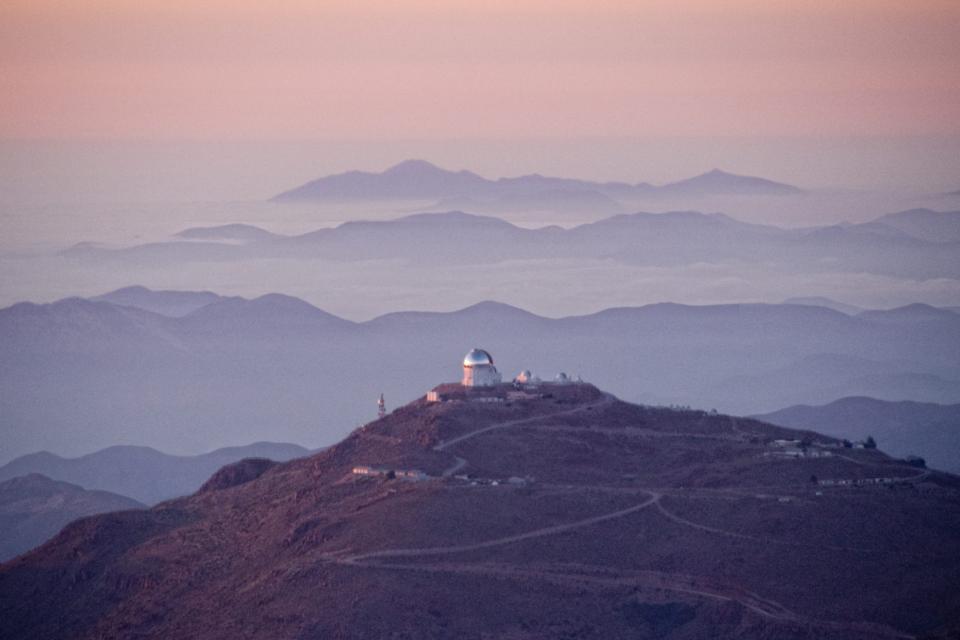
The Cerro Tololo Inter-American Observatory.
The Cerro Tololo Inter-American Observatory.
Photograph by Dennis Crabtree, 2008.
Accessed via Flickr on 22 October 2020. Click here to view source.
 This work is licensed under a Creative Commons Attribution-NonCommercial-NoDerivs 2.0 Generic License.
This work is licensed under a Creative Commons Attribution-NonCommercial-NoDerivs 2.0 Generic License.
The combination of different kinds of technologies also took a different shape. Even if the team had interferometers to precisely determine light wavelengths, they did not have any instruments to measure barometric pressure. Therefore Stock had to improvise meteorological forecasting, since storms could be quite dangerous in the Andes. Stock was fascinated by the condors spotted in the mountains; and muleteers taught him that when there was an accumulation (Stock’s wording, to playfully address the fact that he depended on mules) of condors, it meant a big storm was approaching. Not long after this lesson, being aware of the condors saved the team’s life: they managed to go downhill just in time before a storm.
Mules and interferometers represent the convergence of multiple factors needed when carrying out an avant-garde project in the history of astronomical observatories. Technology then seems to be more complex than just impressive new equipment transferred to the Southern Hemisphere; in the case of the development of transnational astronomy in Chile in the 1960s, it also included a diverse relationship with nonhuman actors and the acknowledgment of local culture. Innovation in astronomy was possible because of high-tech instruments such as interferometers and Danjon telescopes, as much as because of the participation of local people and Coquimbo animals. Moreover, to understand technological expertise in areas such as Latin America, we need to bring together not only different scales—the local and the global—but also the convergence of the new and the old, as we begin to understand technology as the integration of different forms of experience.
How to cite
Silva, Barbara K. “Stars, Mules, and Interferometers in Early Transnational Astronomy in 1960s Chile.” Environment & Society Portal, Arcadia (Autumn 2020), no. 40. Rachel Carson Center for Environment and Society. https://doi.org/10.5282/rcc/9138.
ISSN 2199-3408
Environment & Society Portal, Arcadia
 This work is licensed under a Creative Commons Attribution 4.0 International License.
This work is licensed under a Creative Commons Attribution 4.0 International License.
2020 Barbara K. Silva
This refers only to the text and does not include any image rights.
Please click on the images to view their individual rights status.
- Stock, Jürgen. Chile Site Survey Reports. Cerro Tololo Inter-American Observatory, Coquimbo, Chile (no date).
- Edgerton, David. The Shock of the Old: Technology and Global History since 1900. London: Profile Books, 2006.
- Shaw, David Gary. “A Way with Animals.” History and Theory 52 (2013): 1–12.
- Lepetit, Bernard. Les formes de l’expérience: Une autre histoire sociale. Paris: Albin Michel, 1995.
- Revel, Jacques. “La culture populaire: Sur les usages et les abus d’un outil historiographique.” In Culturas populares: Diferencias, divergencias, conflictos, edited by R. Foquerne and A. Esteban, 223–39. Madrid: Casa de Velazquez – Universidad Complutense de Madrid, 1986.
- Pursell, Carroll W. “Technologies as Cultural Practice and Production.” Technology and Culture 51, no. 3 (July 2010): 715–22.
- Silva, Bárbara. “Transnational Astronomy: Science, Technology, and Local Agenda in Cold War Chile.” In “Technology in Latin American History,” edited by Ian Inkster, David Pretel, and Helge Wendt, special issue, History of Technology 34 (2019) 187–202.


